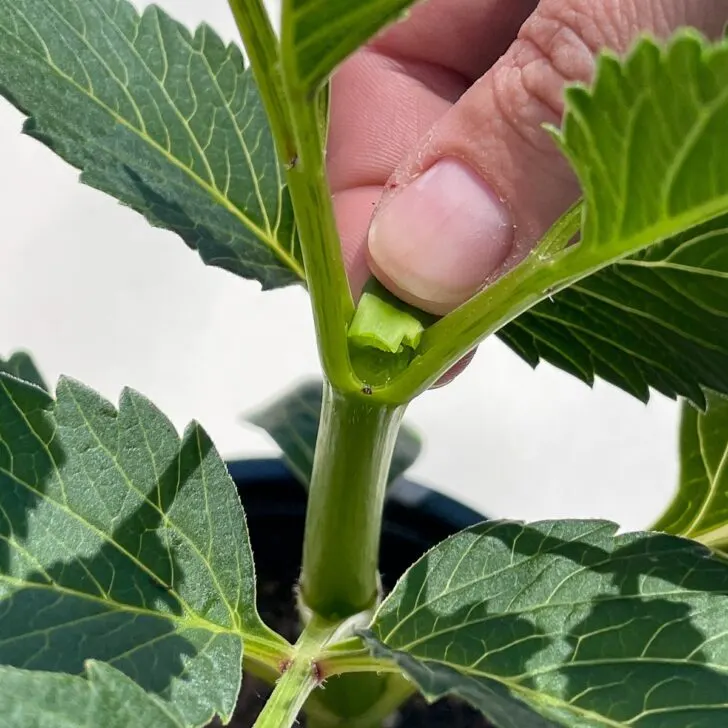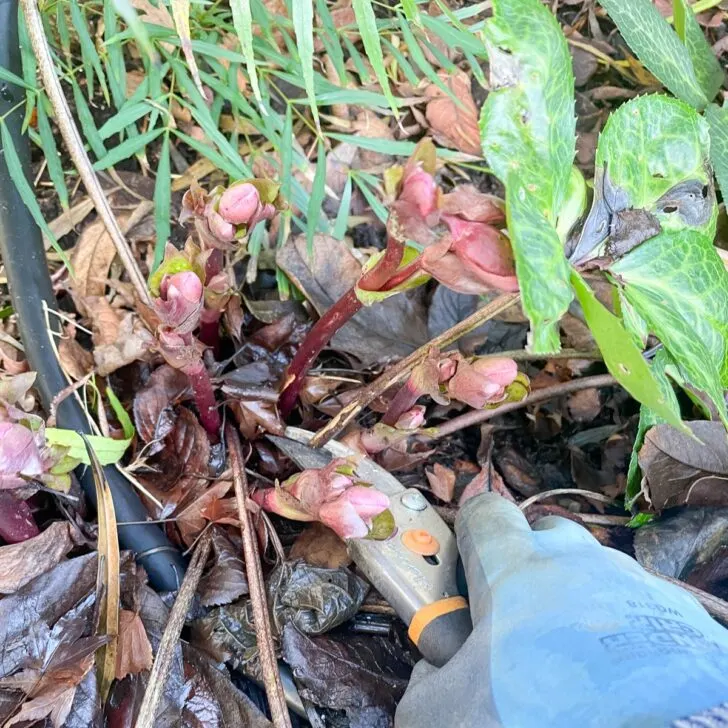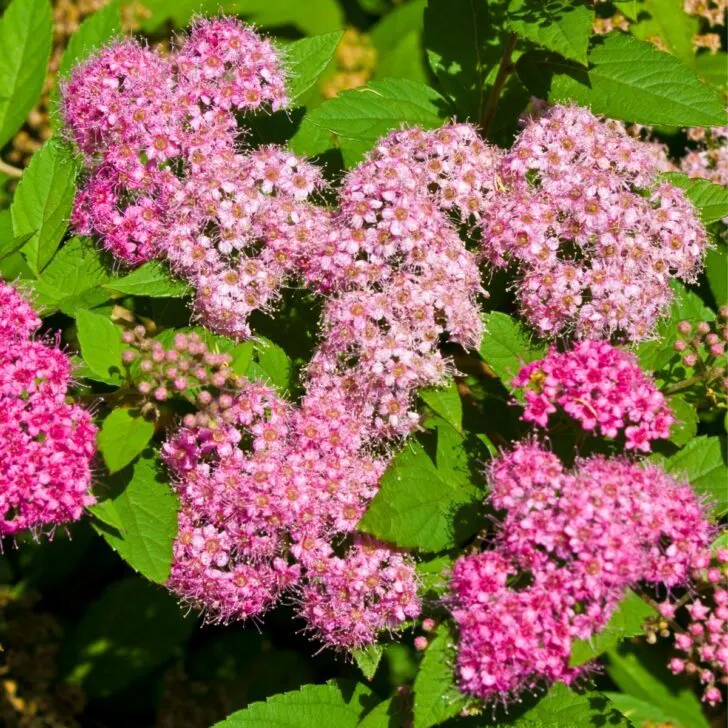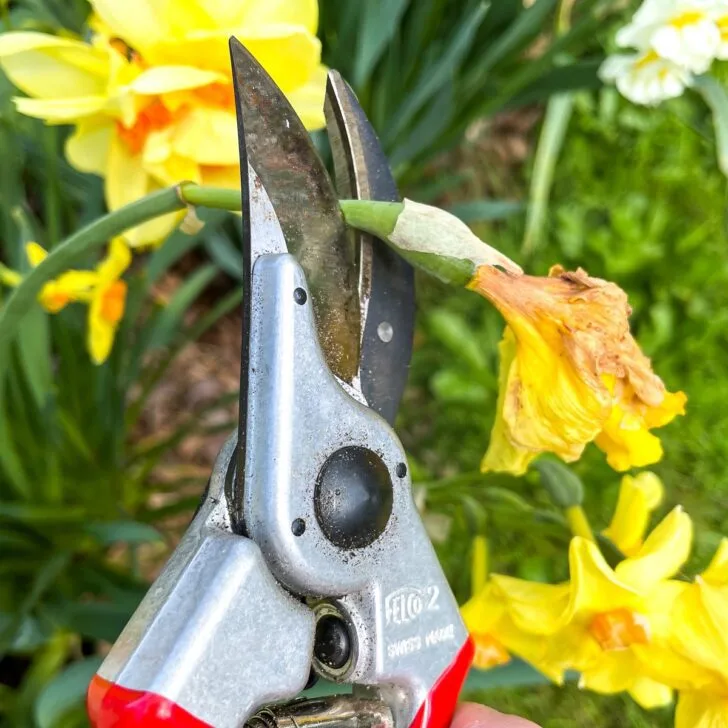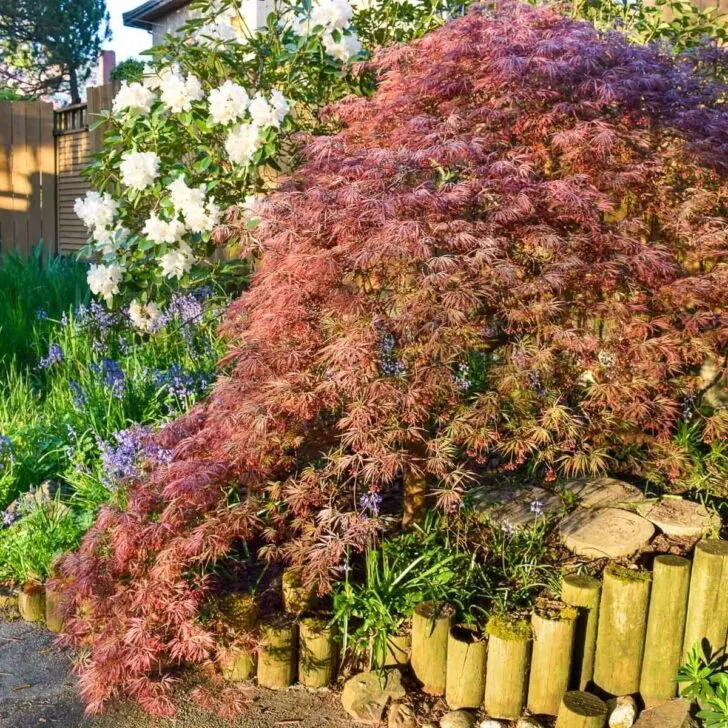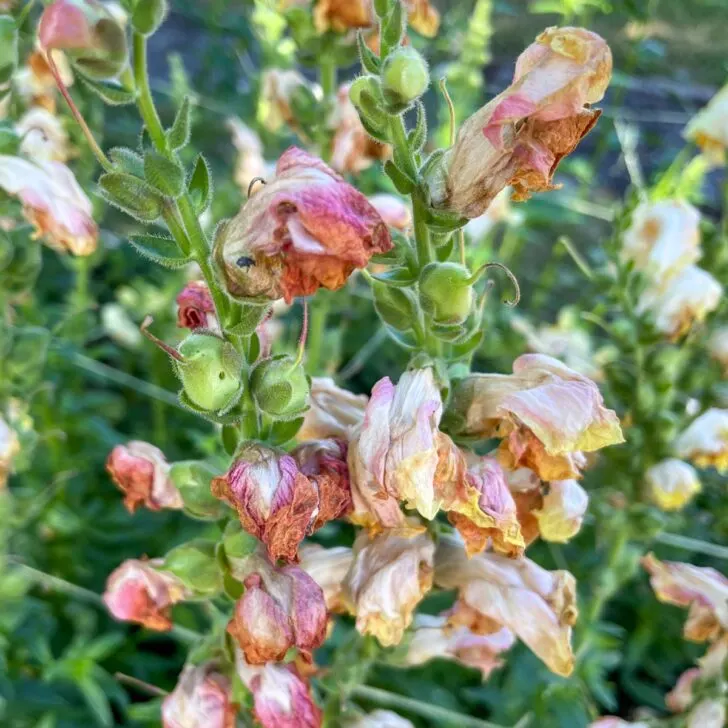Primroses are a cheerful addition to your spring garden. But what do you do when the flowers fade? Learn how to deadhead primrose here!

Primroses are one of the earliest spring flowers in the garden, along with crocuses and daffodils. But their blooms can last much longer, surviving until the summer heat signals for them to go dormant.
They require a little bit of care to keep them looking their best. Once the flowers are spent, primroses can look a little messy. It can be tempting to hack them all the way down to the ground, but they will bloom better next year if you leave the foliage intact.
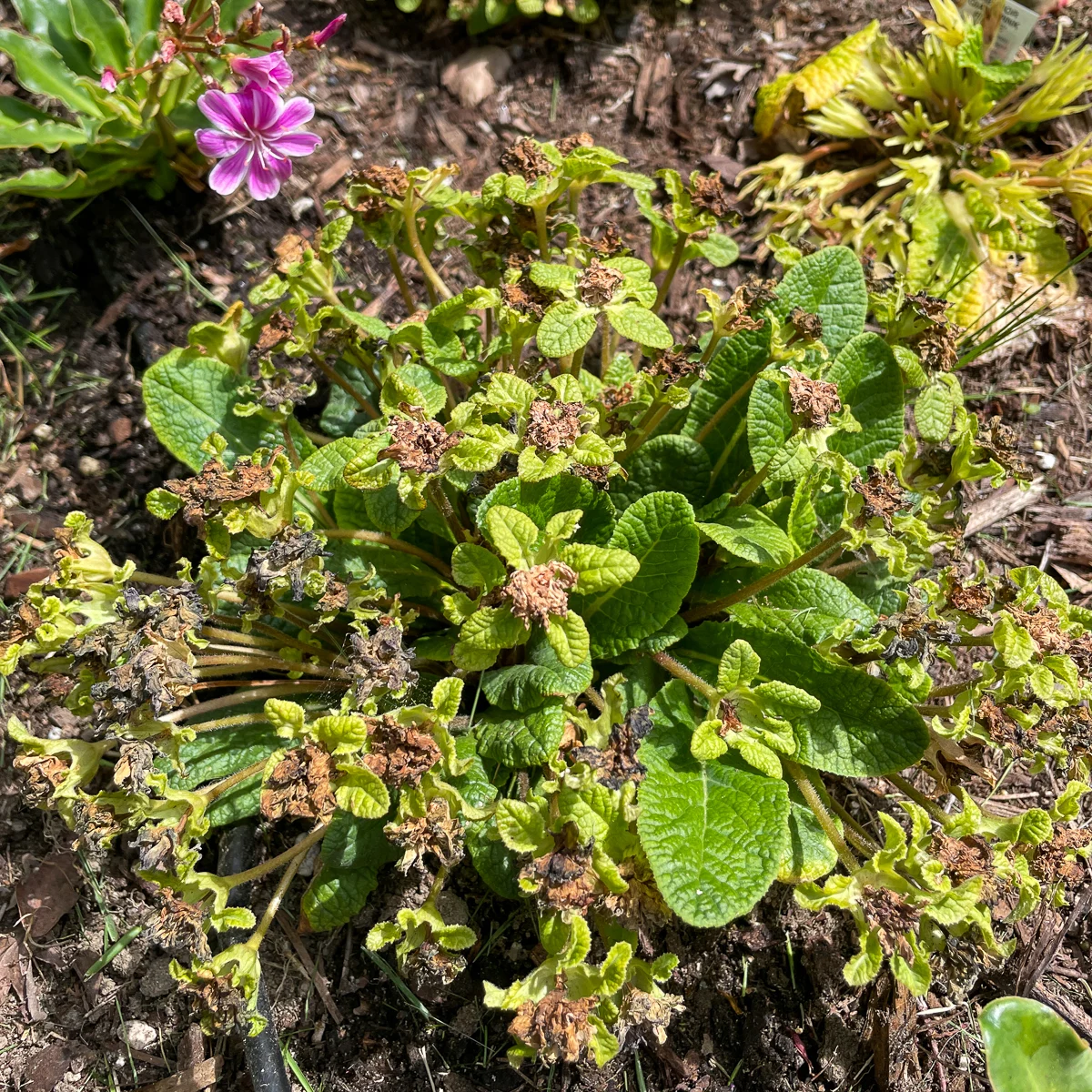
Deadheading primroses is an easy task that cleans up the plant and removes the spent flowers. It also helps to encourage new growth and keep your plants looking healthy.
This post contains affiliate links for your convenience. Purchases made through these links may earn me a small commission at no additional cost to you.
Understanding primroses
Primroses, or Primula, are a genus of approximately 500 species of herbaceous flowering plants in the family Primulaceae. They are characterized by their beautiful rosettes of flowers that come in a myriad of colors, from yellow, pink, red, blue to white.
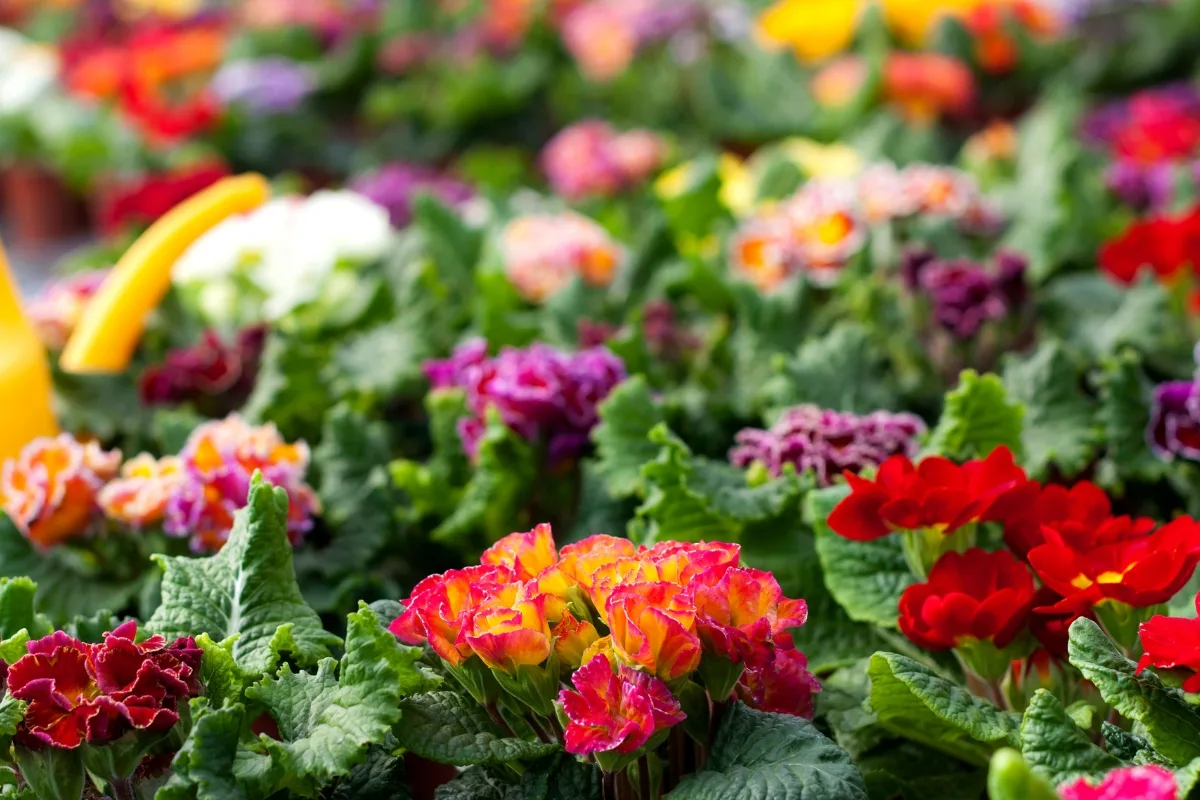
Depending on the species and your growing zone, primroses can be perennial, meaning they live for more than two years. Most garden varieties, like the common Primula vulgaris, return each spring to add a pop of color to your garden.
Primroses generally prefer cool, moist conditions and thrive in partial shade, though some varieties can tolerate full sun if given sufficient water. They usually flower in early spring, making them one of the first signs that warmer days are on the horizon.
When to deadhead primroses
Knowing when to deadhead your primrose is crucial for the plant's health. Typically, a flower is ready to be deadheaded when it starts to wilt and fade, with petals changing color and falling off.
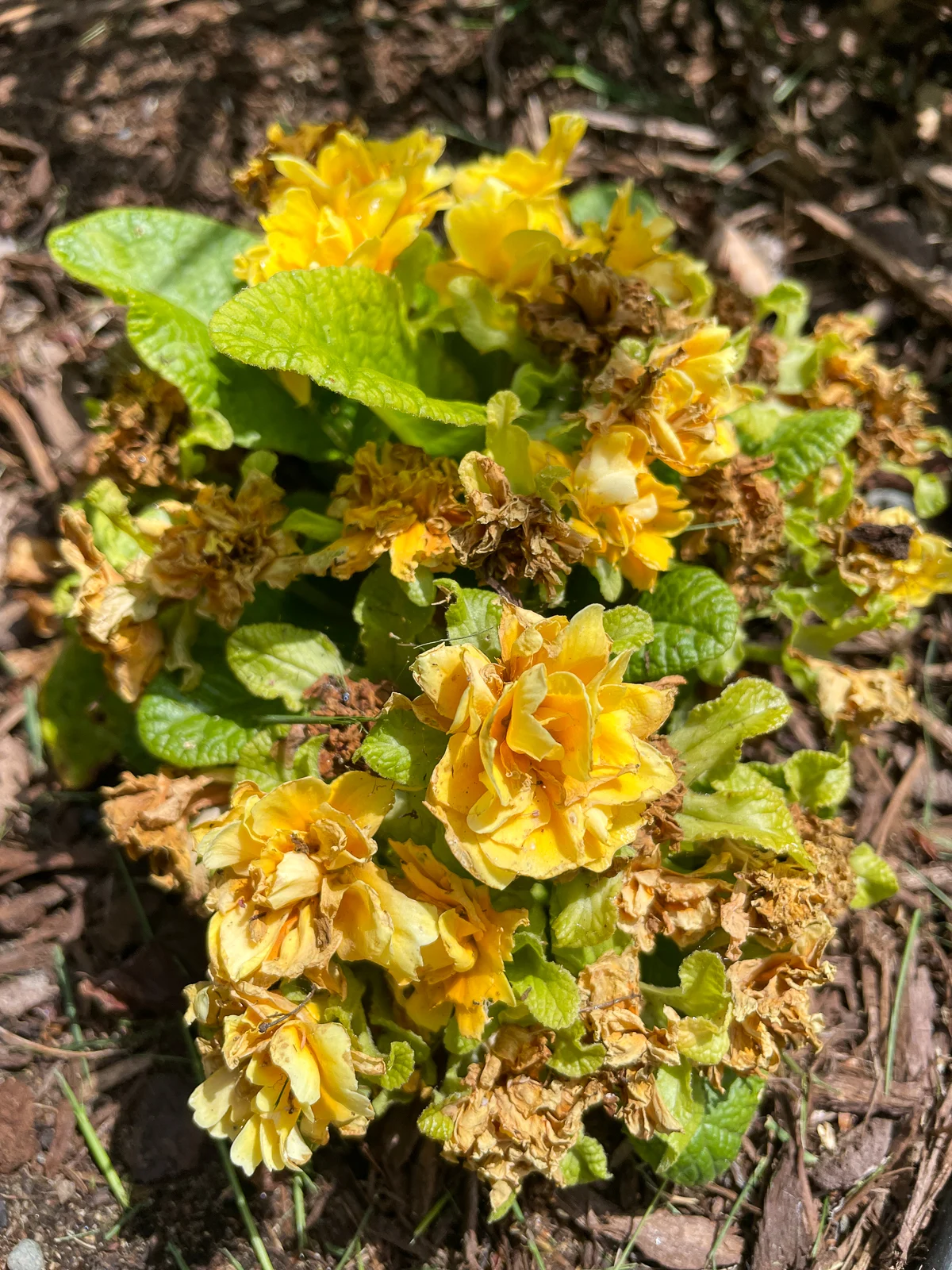
A dead primrose flower becomes dry and brittle, and in some cases, you may notice a seed pod forming. These are all signs that the flower has completed its life cycle and is ready to be removed.
If left on the plant, these old flowers will develop seeds, which may create new plants in the garden next year. However, seed production drains energy from the plant that could be better spent on new growth and flowers.
How to deadhead primrose
To deadhead primroses, simply pinch or cut off the spent flowers at the base of the stem. You can do this by hand or with a pair of sharp scissors or pruners. Be sure to remove the entire flower, including the stem, all the way down at the bottom.
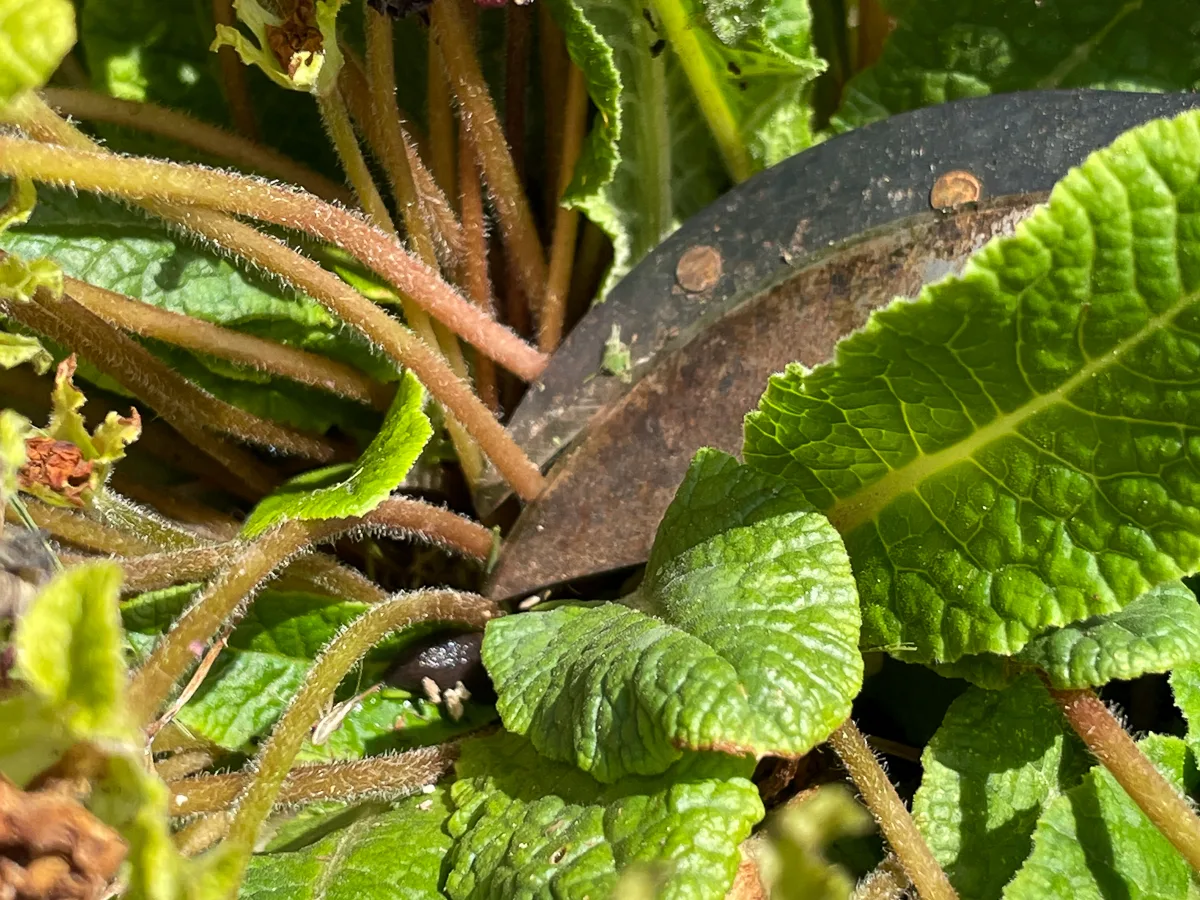
Deadheading primroses should be done regularly during the spring to encourage reblooming. This clump is right next to our front door, so it's easy to stay on top of it. This plant was full of yellow flowers a couple weeks ago, but a few hot days in a row shriveled up all the blooms at once!
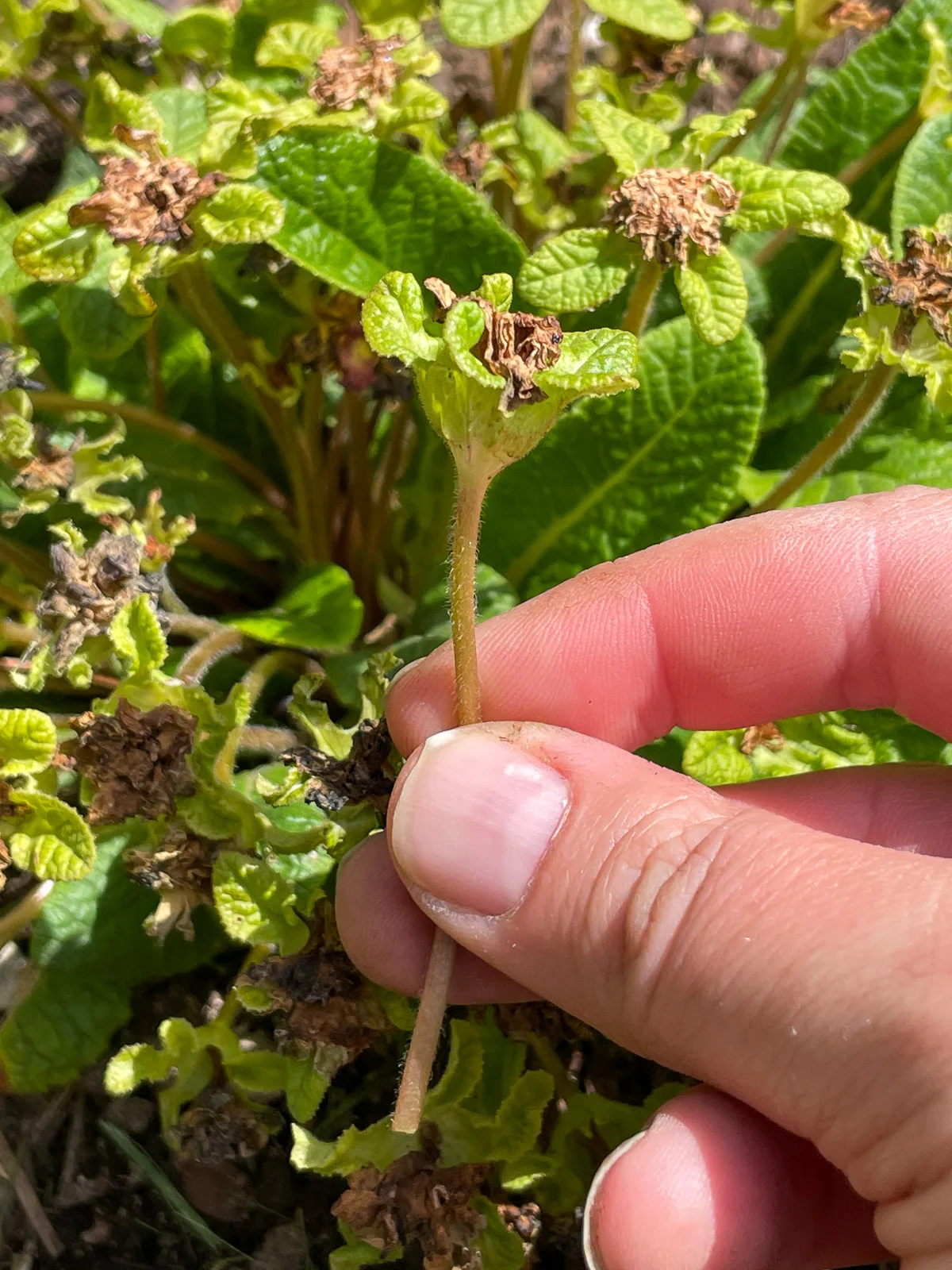
By carefully deadheading all the primrose flowers and stems, the green mound of foliage starts to emerge. Remove any tattered, diseased or yellowed leaves as you go.
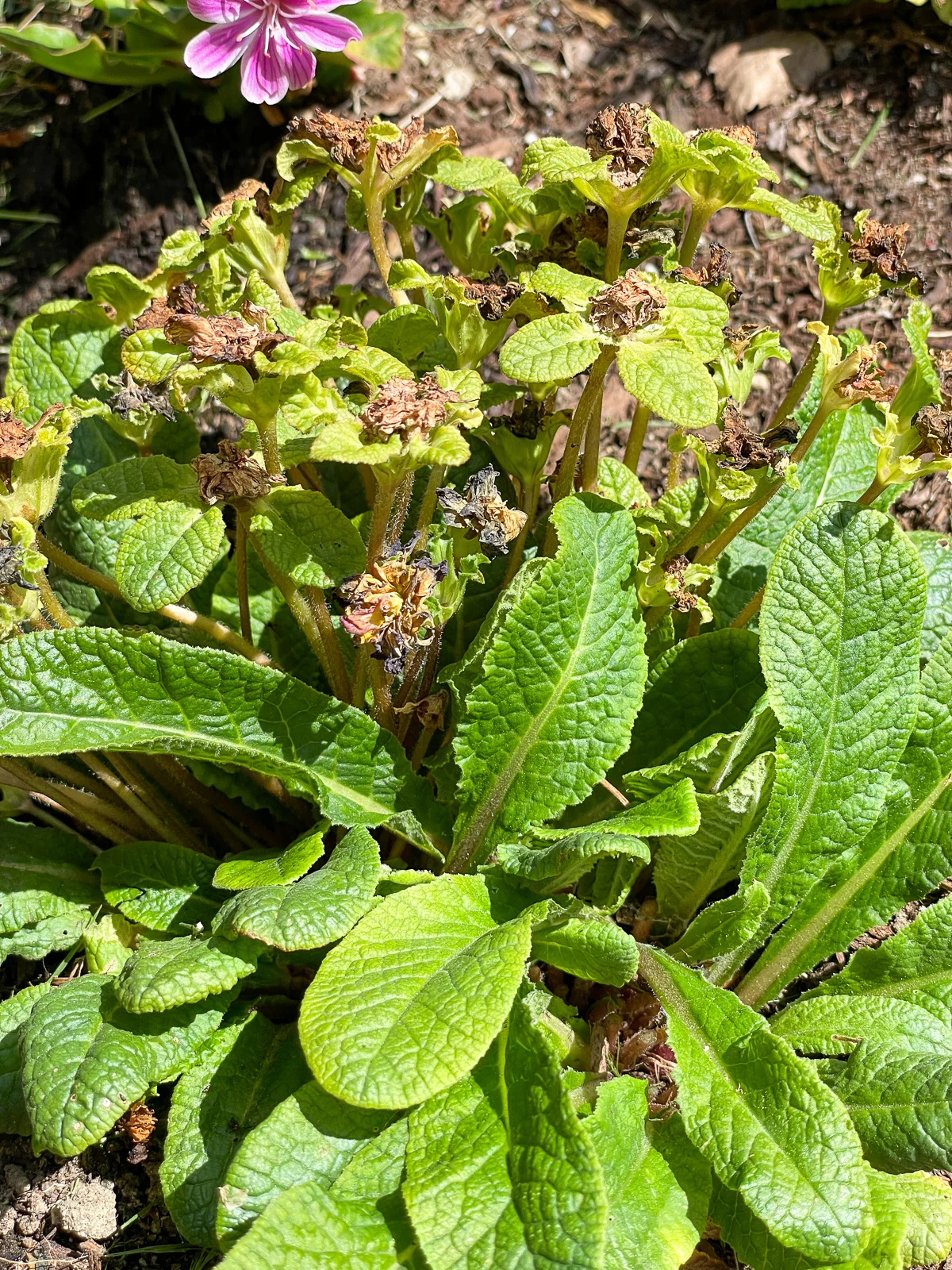
When all the spent blooms are removed, the primrose looks totally different! Now would be a great time to divide larger clumps and fertilize, so the plant can recuperate over the summer months and get ready for next spring.

This garden bed can be tricky to plant in, because it gets part shade in the spring and full sun in the summer. Now that the primroses are cut back, I'm planting sun-loving annuals around them to fill in the space with more color!
Frequently Asked Questions about Deadheading Primroses
The best time to deadhead primroses is as soon as the flowers begin to fade and wilt. This can be done throughout the blooming season and encourages more flowers to form.
While not absolutely necessary, deadheading is a beneficial practice. It can enhance the plant's aesthetics, encourage more blooms, and help prevent disease and pest infestations.
Although deadheading will extend the bloom time of primrose, they are a spring flower that will go dormant in the summer.

